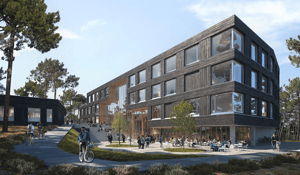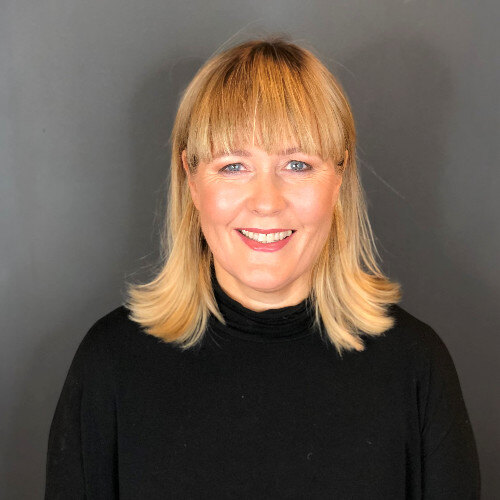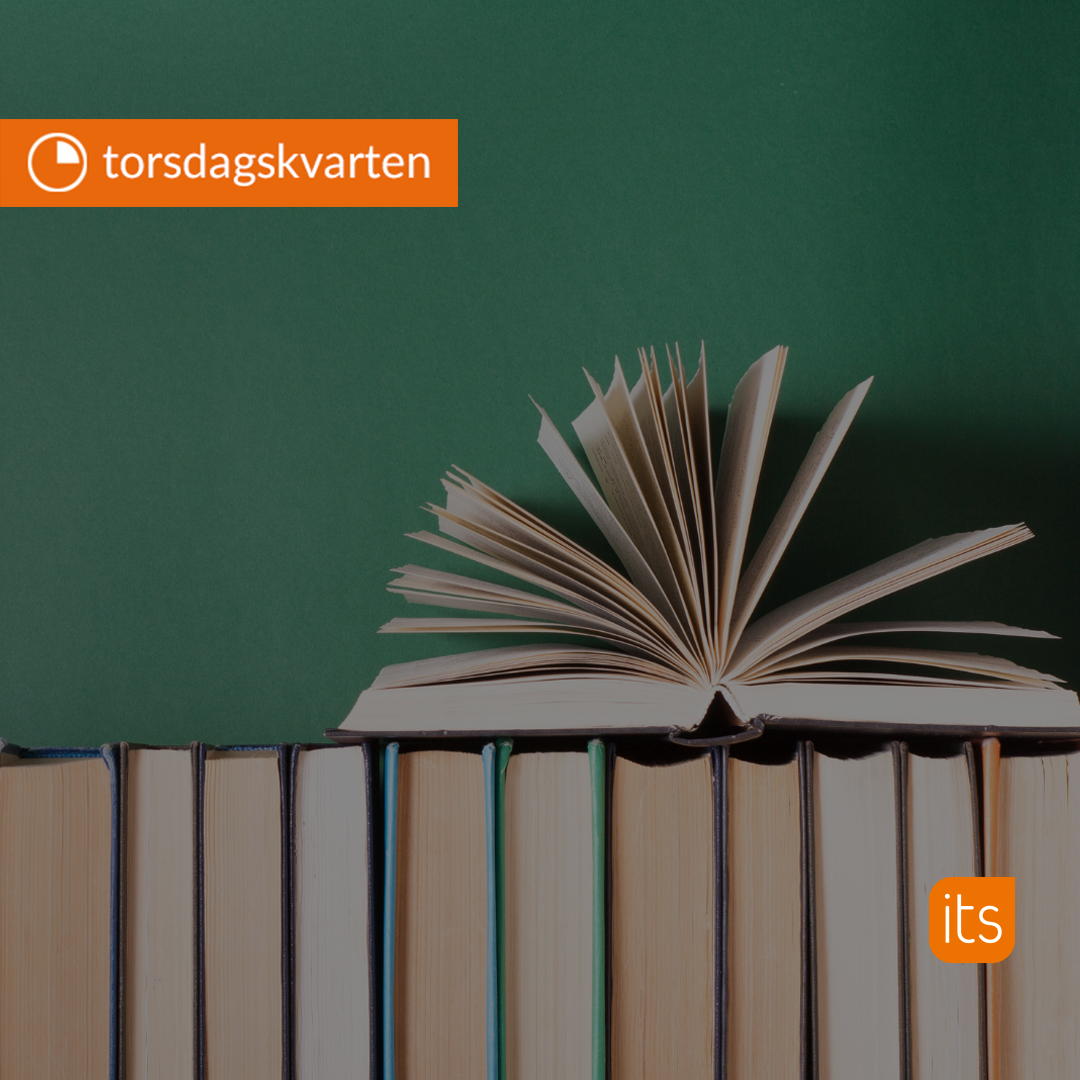Ta del av kundberättelser och hur våra produkter har hjälpt till att lösa problem och tillgodose deras behov.

Fagskolen i Agder - Framgångsrik implementering av yrkesutbildning på nätet
Översättning genererad av en AI-översättningstjänst
Fagskolen i Agder lanserade sina yrkesutbildningsprogram online hösten 2021 och övergick från traditionella klassrumsmiljöer till en helt onlinebaserad modell. Eva Merethe Hornnes, skolans e-learningkoordinator, spelade en nyckelroll i denna omvandling och fokuserade på att utnyttja elev data och feedback för att hantera övergången effektivt. I juni 2021 träffade Hornnes itslearning -pedagogen Beathe Kathrine Moe i itslearning podcast Skoletid för att diskutera processen och framgången. Denna fallstudie skrevs baserat på det samtalet.

"Vi har inte varit rädda för att göra förändringar eller lyssna på vad studenterna tycker. Vi har också fått feedback från studenter som säger att de uppskattar att vi lyssnar på dem och att vi är lyhörda för deras behov."
Eva Merethe Hornnes
Koordinator för e-learning, Fagskolen i Agder
Utmaningen
Övergången från traditionell, personlig utbildning till en helt nätbaserad yrkesutbildningsmodell på Fagskolen i Agder innebar stora utmaningar. Förändringen krävde en ny pedagogisk modell och en översyn av undervisningsmetoder och kursleveranser. Lärarna behövde omfattande utbildning i Vestfold-modellen, ett pedagogiskt ramverk för onlineundervisning, och nytt digitalt kursmaterial behövde utvecklas från grunden. En annan viktig utmaning var att upprätthålla engagemanget på elev på en avlägsen lärmiljö. Det krävdes innovativa lösningar för att främja samarbete och upprätthålla en känsla av gemenskap, eftersom studenterna inte längre hade möjlighet att träffas ansikte mot ansikte.

Processen
Fagskolen i Agder använde sig inledningsvis av Vestfoldmodellen, ett pedagogiskt ramverk som är utformat för nätbaserad utbildning. Alla instruktörer utbildades i denna modell och kursen planeringar baserades på dess principer. Men efter ett års erfarenhet och justeringar utvecklade skolan sin egen metod, som nu kallas FIA-modellen (Fagskolen i Agder-modellen). I FIA-modellen betonas kontinuerlig anpassning och lärande, med utgångspunkt i elev data och intern reflektion.
Tekniker för flippat klassrum: En viktig aspekt av FIA-modellen var användningen av flipped classroom-tekniker. Kurserna hade veckovisa live-sessioner online, som kompletterades med förberedande material som videor, podcasts, frågesporter och läsning, som alla gjordes tillgängliga för deltagarna på itslearning minst en vecka före live-sessionen. LMS:et itslearning erbjöd ett organiserat sätt att hantera allt läromaterial, vilket gjorde det enkelt för studenterna att hitta allt de behövde. Lärarna kunde planera, skapa, återanvända och samarbeta kring undervisningsmaterialet på plattformen, och Zoom-integrationen säkerställde sömlös onlineundervisning. Att ha allt samlat på en plats med en enda inloggning förenklade undervisnings- och inlärningsupplevelsen för både studenter och lärare.
Efter varje session fyllde studenterna i inlärningsanteckningar och reflektionsfrågor. Dessa uppgifter hjälpte dem att internalisera materialet och reflektera över sina inlärningsstrategier. Lärarna gav skräddarsydd feedback via itslearning, vägledde studenter som behövde extra stöd och gav förslag till vidare studier.
Med hjälp av rapporteringsfunktionen på itslearning kunde både lärare och elever följa utvecklingen. Hornnes gav eleverna månatliga uppdateringar om deras inlärningsutveckling, vilket underlättade meningsfulla samtal om justeringar och inlärningsmål.
Bygga upp en samarbetsinriktad lärandegemenskap : För att främja samarbete skapade Fagskolen i Agder fasta inlärningsgrupper baserade på faktorer som studenternas geografiska läge och yrkesbakgrund. Dessa grupper träffades i Zoom Breakout Rooms under livesessioner och hade ett eget Project Space på itslearning, där de kunde dela resurser, föreläsningsanteckningar och samarbeta om uppgifter. Deltagarna uppmuntrades att öppna ett dokument i sitt Project-rum för att tillsammans anteckna från lektioner och diskussioner i Breakout Rooms. På så sätt skapades en resursbank som gjorde det möjligt för studenter som missade en session på grund av arbete eller andra åtaganden att ta igen vad deras grupp diskuterat.
Fagskolen i Agder fokuserade också på att skapa en stark känsla av gemenskap bland studenterna. Före den första sessionen uppmanades studenterna att delta i diskussionsgrupper på itslearning för att presentera sig själva. Denna inledande aktivitet gjorde studenterna bekanta med plattformen och bidrog till att bygga upp en relation. Diskussionerna utvecklades från avslappnade planeringsområden, som favoritmat, till mer akademiska samtal, vilket gjorde eleverna bekväma med att dela med sig och ställa frågor. Lärarna såg fördelarna med att använda diskussionsforum som var kopplade till specifika uppgifter. Till en början tvekade eleverna att ställa frågor offentligt, men med tiden började de stötta varandra. Lärarna uppmuntrade detta peer-to-peer-lärande genom att avstå från att svara direkt och låta eleverna ta ledningen när de besvarade frågor.
Resultatet
Ett datadrivet tillvägagångssätt:
Använda elev data och feedback för att skapa en pedagogisk modell för onlineundervisning.
Under det första året av sitt online-utbildningsprogram anpassade sig Fagskolen i Agder inte bara till utmaningarna med online-lärande utan utvecklade också sin undervisningsmodell avsevärt. Med stöd från DIKU (Norwegian Agency for International Cooperation and Quality Enhancement in Higher Education) utvecklade skolan en särskild utbildningskurs för instruktörer i FIA-modellen. Kursen skulle hjälpa både nya och etablerade lärare att förfina sina färdigheter i onlineundervisning, vilket skulle säkerställa en genomgående hög utbildningsstandard.
Som Hornnes reflekterade hade det gångna året varit en period av enorm professionell tillväxt. Med fler pedagogiska diskussioner än någonsin tidigare anammade personalen en kultur av öppenhet och samarbete och försökte hela tiden förbättra sina undervisningsstrategier utifrån elev data, feedback och pedagogiska diskussioner.
Campus:
Grimstad
Fokus:
Yrkesutbildning
itslearning användare:
Sedan 2020
Studenter:
650


-1.jpg)